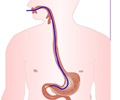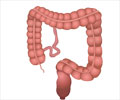
‘A compound made up of polyethylene glycol and dihydroxyacetone (DHA), a natural by-product of the breakdown of glucose in the body was strong enough to protect mouse intestines during suturing of the abdomen and quickly dissolved in the body.’
Tweet it Now
Dr. Spector asked for material that would be strong enough to protect the intestines from a needle puncture and bendable enough to insert through a laparotomy incision that would quickly dissolve in the body. "It was bendy and stretchy and degraded really fast," Dr. Putnam said. "It was a match made in heaven." As it turned out, Dr. Putnam's then graduate student Nicole Ricapito had created and was testing a material that met those specifications.
In an earlier study the collaborators and their colleagues demonstrated that the compound was strong enough to protect mouse intestines during suturing of the abdomen and quickly dissolved in the body.
The compound is made up of polyethylene glycol, a chemical compound used in laxatives and many personal care products, and dihydroxyacetone (DHA), a natural by-product of the breakdown of glucose in the body.
The U.S. Food and Drug Administration has approved the use of DHA in nutritional supplements and spray tanners. The polyethylene glycol lends flexibility to the device and DHA adds strength, Dr. Putnam said. Both break down when exposed to water in the body.
Advertisement
But Drs. Spector and Putnam's device is left behind in the abdominal cavity, allowing the final sutures to be made with protection still in place. The study found that the device dissolved within three hours of the surgery, leaving no scarring or signs of toxicity.
Advertisement
If all goes well, Dr. Spector said this flexible material might one day help surgeons more confidently and securely close abdominal incisions.
"I hope it will lead to fewer incisional hernias," he said. "In addition, the implantable device could be used in a multitude of situations where surgeons want to protect vital structures from inadvertent needle puncture, but using a removable retractor would prove difficult or impossible."
Source-Eurekalert









